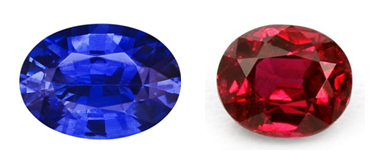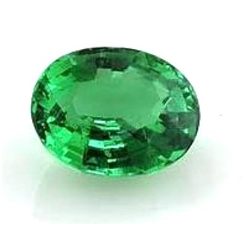GEMSTONE EDUCATION
The beautiful colour of a gemstone, is its most important quality and defining characteristic.
When we talk about gemstones colours we talk about their hue, tone, and saturation.
- Hue refers to the dominate colour of the stone such as blue, red or green.
- Tone represents how light or dark a stone appears.
- Saturation describes the strength or intensity of the hue or the main colour.
With most gemstones, an intense heavily saturated colour of medium tone is the most desirable and valuable. Colour followed by transparency is the number one factor in determining a gemstones value.
ClarityAll gemstones contain naturally occurring inclusions. Inclusions are a completely natural part of a gemstone and create its individual uniqueness. Some gemstones naturally have a very low number of inclusions such as Aquamarine, while others like Emerald naturally have a high number of inclusions. Again this is a completely natural occurrence.
Clarity is an important factor when considering gemstones. A high number of inclusions will affect the gemstones transparency and therefore its beauty and value.
CutFor many gemstones, a good cut is marked by its ability to evenly reflect light, showcase the gemstones colour and have good proportional and symmetrical appearance.
SizeA gemstones size is often not reflected accurately by looking at its carat weight. This is because all gemstones have different densities so two gemstones that appear to be the same size may in fact be different weights. Gemstones will often be described by their dimensions rather than Carat Weight (e.g. 6mm x 4mm or 7mm x 5mm)
Sapphire and RubySapphire and Ruby gemstones are part of the Corundum family and have a Mohs rating of 9, meaning they are one of the hardest gemstones and ideal for everyday use (The Mohs Scale rates minerals specifically on their ability to withstand scratching and abrasions on a scale from 1 to 10).
The Sapphire exists in a number of shades including orange, yellow and brown but the most commonly found, are blue and pink.
Rubies exist in different shades of red, ranging from near-burgundy to a pale pink. Colour is by far, the most important factor to consider when evaluating a Ruby. A vivid, medium-dark red will command a much higher value than a pale pink Ruby. It is this variation in colour that determines the price of a ruby.
Sapphire and Rubies are mined deep in the earth's crust and are found all over the world in countries such as Sri Lanka, Thailand, India, Burma, Australia and more.
Sapphire and Rubies will almost always have visible inclusions in the gemstones, which is completely natural and gives the stones it unique identity.
Over 95% of all Sapphire and Rubies in the world are heat treated. Heat treatment is widely used and accepted in the industry and is done to increase the gemstones beauty and desirability. Please be aware however, heat treatment is the only accepted treatment in the industry. Other treatments including fracture filling, infusion, surface dyes, beryllium and Irradiation are not accepted and the gemstones cannot be certified. At Angelic Diamonds we will never sell any Sapphire or Ruby gemstone that has been treated in any other way except by heat treatment.

Emerald is part of the Beryl family and has a Mohs rating of 7.5–8 (The Mohs Scale rates minerals specifically on their ability to withstand scratching and abrasions on a scale from 1 to 10). Although still a high rating on the scale, the Emeralds toughness and durability are only considered to be fair, so Emeralds should ideally not be used for everyday wearing.
Emeralds are naturally very heavily included and often have surface breaking fissures. These inclusions are widely accepted and add to each Emeralds individual uniqueness.
Because most Emeralds are heavy included and have surface breaking fissures, 98% of all Emeralds in the world are 'oil' treated to try and enhance the clarity. This is accepted within the industry as common practice.
It should be noted there are a number of other treatment that are not accepted within the industry. These include resins, glass, and plastic polymers that are melted into the gem. Angelic Diamonds will never sell an Emerald that has experienced these types of treatments.
The colour of Emeralds can vary from light green to a very dark green. The colour of an Emerald is considered to be the most Important factor when pricing an Emerald. The most valuable and desirable Emeralds are bluish green to green.
Emeralds must be handled carefully because of their brittleness. Cleaning techniques that use chemicals, high heat or steam should never be used.

